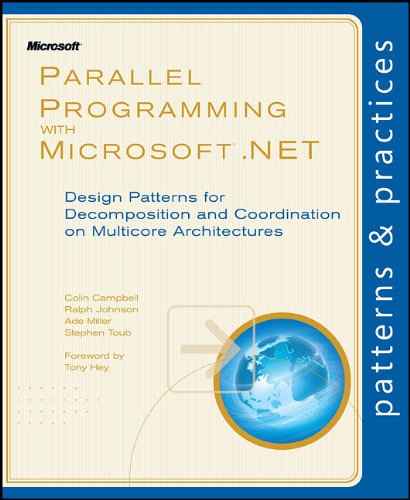|
A Parallel Programming with Microsoft Visual C++: Design Patterns for Decomposition and Coordination on Multicore Architectures
DISCLAIMER:This site does not store A Parallel Programming with Microsoft Visual C++: Design Patterns for Decomposition and Coordination on Multicore Architectures on its server. We only index and link to A Parallel Programming with Microsoft Visual C++: Design Patterns for Decomposition and Coordination on Multicore Architectures provided by other sites. Please contact the content providers to delete A Parallel Programming with Microsoft Visual C++: Design Patterns for Decomposition and Coordination on Multicore Architectures if any and email us, we'll remove relevant links or contents immediately. |
Books from NEWZ
Graphics Programming Methods (Charles Ri...
Programming Language C++ Collection (50 ... Programming Windows Azure: Programming t... OpenCV 2 Computer Vision Application Pro... Gui Programming With Python: Using the Q... Logic for Programming, Artificial Intell... Scratch Programming for Teens,1 edition Programming in Python 3: A Complete Intr... Fundamentals of Sensor Network Programmi... Computers and Programming (Ferguson Care... Programming, CS and Math Book Collection... Programming, CS and Math Book Collection... Art of Computer Programming vol 1 - 3 A Tester's Guide to .NET Programming Programming with POSIX Threads Beginning C# Object-Oriented Programming Computational Logic: Logic Programming a... Concurrent Programming in Mac OS X and i... Nonlinear Programming: Concepts, Algorit... Axiomatising the Logic of Computer Progr... Programming the Finite Element Method Applied XML Programming for Microsoft .N... Microcontroller Programming The Microchi... Programming and Customizing the AVR Micr... Programming and Customizing the Pic Micr... |
Comments
 Comments (0)
All
Comments (0)
All
Popular searches







![[HF] Programming in C# with Microsoft Visual Studio 2010](http://i04.s2.imagehosting.ws/2010-11-12/11279/12875818810017b7c6mediu.jpg)


